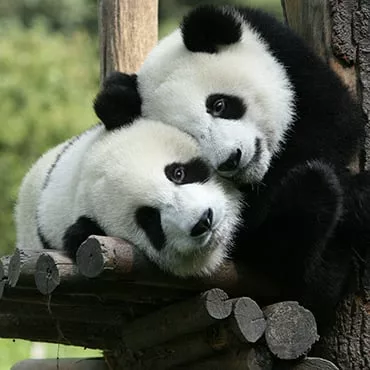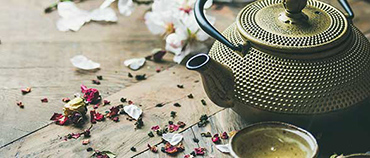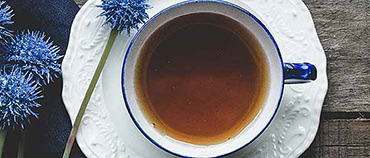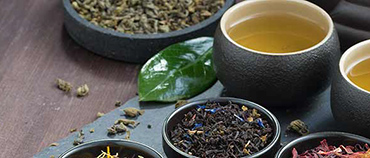
A Chinese tea ceremony is synonymous with life in China. Hardly a surprise given that tea has been cultivated in China for more than three thousand years.
There’s no doubt that Chinese tea provides many health-giving properties, but the tradition of the Chinese tea ceremony draws more from a desire to create a spiritual and social connection with others through ritual than to simply be a healthy pastime.
The art and science of drinking Chinese tea in a ceremony is something to be learned. In fact, much has been written on the subject, including our series of Chinese tea blogs . In fact, it’s an art form on a whole new level.
Steeped in tradition and science, there are very definitive requirements for the water, the tea itself, tea sets used, and the environment in which the ceremony takes place. The people involved in the tea ceremony are also an important factor and must bring with them a quiet reverence to the experience. As such, tea is seen as a medium that transforms the relationship between people and things into something meaningful.
In China, the rich tradition of tea ceremony integrates many elements, with music, calligraphy, decoration, flower arrangements and performance among them. Referred to as the six beauties (or essential aspects) of the tea ceremony, they are intended to guide both the uninitiated and well-versed in what is necessary for this lovely timeless ritual.
‘Six Beauties’ of the Chinese Tea Ceremony
#1 The beauty of people

People are the most fundamental element in a tea ceremony, and are often thought to be the most beautiful. The understanding of beauty here reflects both inner (spiritual) and outer (physical) beauty. In simple language this means that who you are is more important than how you appear. Come to a tea ceremony ready to shine your best self.
#2 Tea leaf beauty

It’s no small statement that the appearance of tea can fill a person with a deep pleasure. With the appearance of each tea leaf to be considered (should it be flat and smooth, or straight and even?), it’s important to recognise there is such a ‘thing’ as tea leaf beauty. The color of tea leaves should also be pleasing to the eye, while the tea’s taste is equally important. Over the ages, this has varied. For example, tea lovers in the Qing dynasty praised the West Lake Longjing tea claiming it carried the ‘sweet smell of orchids; a long and continuous aroma and was clear and light, seemingly tasteless. And the sign that a tea is truly beautiful and Zen-like? There is no taste after drinking, a fact greatly influenced by the beauty of the tea leaf.
#3 Source beautiful water

In Chinese tea ceremony parlance, water is considered ‘the mother of tea’. It seems that ancient tea ceremony wisdom had a certain logic to it, with claims made that 8 parts tea leaves with 10 parts water will brew 10 parts tea, while 10 parts tea leaves with 8 parts water will brew 8 parts tea.
With clean water now readily available, there is no longer the pressure to source purified water, however tea ceremony artists do try to remove chlorine in tap water, or choose mineral water that contains less calcium and magnesium. The point here? Use the best quality water you can get your hands on.
#4 Drink from a beautiful tea set

If water is the mother of tea, then the tea set is the ‘father of tea’ – or so it’s claimed. Ever since tea became a ‘thing’ in China it has been accompanied by the proliferation of beautiful Chinese tea sets. Tea sets take many and varied shapes and sizes, but one thing they do share: the balance of beauty and function that highlight the whole tea ceremony experience. The finest tea sets take natural shapes, are made with pure materials, decorated simply with meaningful art. Of course, a tea set’s beauty is a secondary concern to its practical performance. It must also set off the soup color of tea, maintain a strong fragrance, and to be easy and enjoyable for the user.
#5 Enjoy the tea ceremony in a beautiful environment

The environment in which a tea ceremony is conducted is of equal importance to every other element of beauty. In short, it must be aesthetically beautiful and cultivate a sense of tranquility and peace in each person attending. It should encourage a desire to return to nature. As such, tea ceremony connoisseurs believe this allows people and nature to come into communion with each other.
#6 Appreciate the art form

Not only is a tea ceremony an opportunity to imbibe tea, it is also the chance to practise the fine art and skill of conducting the tea ceremony itself. Even today, a Chinese tea ceremony is considered an art form, with the practical aspects considered beautiful in and of themselves. The right tea, tea set, environment, and water are of equal importance as the cleanliness and hygiene of the environment. The science of the ceremony focuses on the time taken to brew the tea and tea ratio. Careful attention is paid to the details of tea ceremony etiquette, including the utensils used to perform the ceremony.
It’s clear there’s a whole lot more to a Chinese tea ceremony than boiling some water and pouring it on tea leaves. In fact, it can – and should be – a reverential experience. If you’re ready to try it while on tour in China, let us know. We can make arrangements for you to attend a traditional Chinese tea ceremony and create a travel memory you’ll love forever.
ChinaTours.com is dedicated to helping western travelers from the United States, United Kingdom, Australia, Canada, and elsewhere enjoy an authentic experience of China, including adventurers on the hunt for the very best Chinese tea. We are passionate Chinese tea drinkers too. In fact, we source the tea we drink from all corners of China – and would love to take you there. If you’d like to enjoy an authentic Chinese tea ceremony or travel to parts of China where tea is grown, just let us know. We’re here to share your travel passion. Enquire via our contact form and we’ll respond within 24 hours.




 Beautiful China!
Beautiful China!








